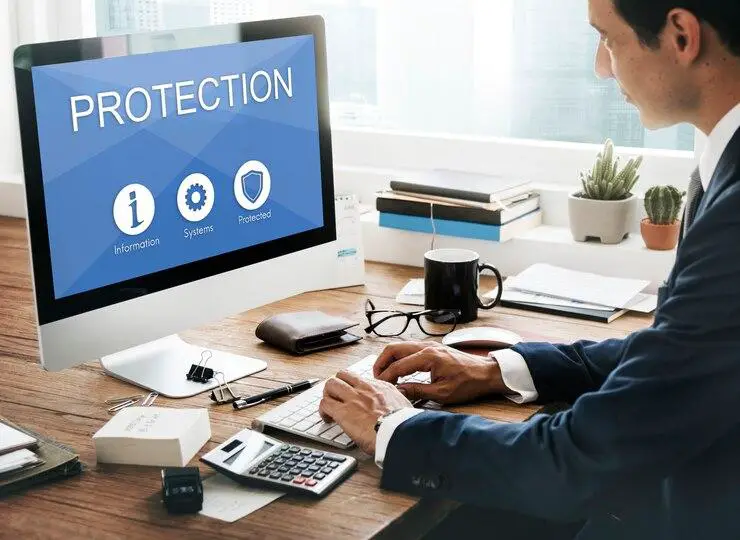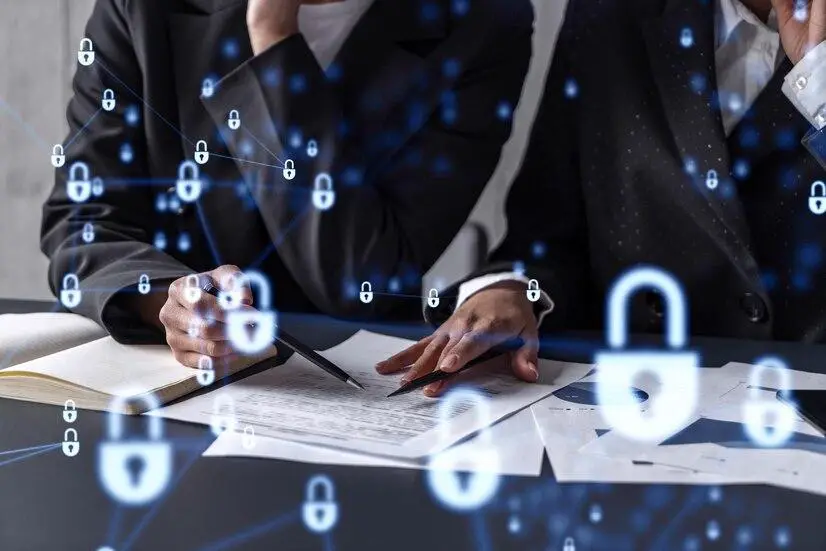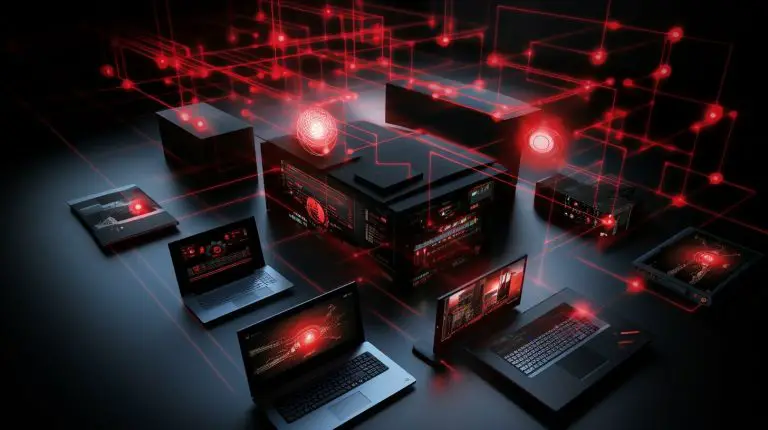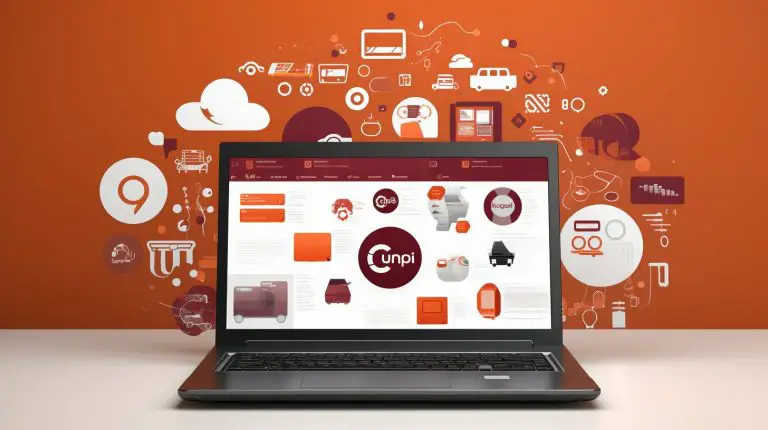The Intersection of Security and VPN Technology: Strategies for Protecting Personal and Business Information
In the year 2021, the profits of cybercriminals surged by an astonishing 64 percent, catapulting their illicit ventures into a colossal industry worth $6.9 billion. Analysts pinpoint the massive expansion in cybercriminal activities largely to companies’ swift transition to remote work during the era of digital workplaces, often without adequate cybersecurity defenses.
With remote and hybrid work models becoming the norm, implementing robust VPN cybersecurity measures has become imperative for contemporary digital protection strategies. Now VPN is the simplest and at the same time very reliable tool for protecting personal and business information. Let’s talk about the role of VPN in the security sector and give additional tips.

The Intersection of Security and VPN Technology
Secure Remote Access
Imagine Acme Co.’s headquarters, where two pivotal servers – Server A and Server B – are the heart of their operations. Unlike modern office practices, Acme Co. shuns Wi-Fi and insists that every device be linked up through Ethernet cables to the network for access.
In this cable-bound scenario, Server A stands at the core of a wired network, interlinked with desktops and a central office printer. Connectivity is exclusive – if you’re not physically tied to Server A’s network through a snarl of cables and routers, accessing Server A or any of its peripheral devices is out of the question – the same exclusivity reigns for Server B.
For example, consider that Bob needs to print a file harbored on Server A; he must ensure his desktop is cabled into the correct network to communicate with Server A and consequently, the printer. Should Bob need a document from Server B, connecting to that specific network becomes imperative.
Now, envision the digital counterpart of this setup: VPNs. They emulate the selectivity of physical networks while discarding the cables. Just like Bob’s desktop needing a direct line to Server A for access, a computer can’t reach a VPN-protected resource without establishing a virtual connection to that VPN. If Acme Co. embraced wireless connections and VPNs, rather than their wired infrastructures, Bob’s process would switch from plugging in cables to signing into VPN A for Server A’s access, or VPN B for reaching Server B’s reserves.
Advice! If you encounter problems launching a VPN, then you need to take several steps. First try connecting to a different server. If the VPN is not working, you should simply change your provider. Good providers rarely have a VPN that won’t connect. Even if this happens, another server is always available.
Data Encryption
A VPN secures your internet connection by creating encrypted tunnels for the data you transmit online. It typically employs protocols like IPsec or SSL/TLS to ensure the highest level of encryption. When connected to a VPN, your device exchanges encryption keys that scramble and unscramble data, leading to unbeatable privacy. Although this encryption might slightly delay your internet speed, it’s a small trade-off for the security benefits.
Even when your data zips through the public web, a VPN keeps your information under lock and key. For example, consider Alice, who logs into her company’s VPN from home. She has to reach a server far away to pull up sensitive databases. Even if her data packets make a pitstop at some busy Internet Exchange Point and there’s a hacker lurking there, spying on the traffic, they can’t decipher her data. Thanks to VPN encryption, what the hacker encounters is just a gibberish stream of data, keeping Alice’s corporate access and activities strictly confidential.
Additional Data Security Tips
Create Strong Passwords
Crafting a robust password is crucial for your digital security. Avoid using easily guessable information, such as personal dates. Opt for a mix of lower and upper-case letters, numerals, and special characters. For added security, update your passwords regularly and never recycle them across different platforms. Consider using a password manager for heightened efficiency and safety.

Be Careful With Links and Attachments
Cybercriminals employ cunning tactics, crafting phishing scams that mimic authentic messages from well-known banks, service providers, or businesses. Key indicators of such fraudulent activities may include unusual spelling mistakes or sender email addresses that deviate from the norm. You can also use browser VPN Edge, which can detect phishing. These red flags suggest the email might be a phishing attempt rather than genuine communication. Keep a vigilant eye out for these signs to protect yourself from potential scams.
Take Time for Updates
Certainly, your organization transcends the scale of a quaint family-owned shop or a fledgling tech venture, implying that robust cybersecurity measures like firewalls and antivirus software are standard issue on your employees’ computers.
Yet, a revealing statistic emerges from a cybersecurity survey commissioned by Google — a mere 35% of tech specialists prioritize the updating and implementation of the latest security patches in their cybersecurity routine.
In an era driven by the need for immediate results, the survey highlights a tendency among employees to defer updates in order to avoid disruption to their workflow.
To safeguard your corporate information assets, it is crucial to establish a comprehensive patch management strategy. This strategy would empower your cybersecurity personnel to verify and apply the most recent security patches across all corporate devices, thereby fortifying your defenses against cyber threats.
Conclusion
VPNs – they’re not just some high-tech accessory, they’re a total must-have for any savvy biz these days. They’re the digital superheroes that give you some serious online anonymity, keep your data on lockdown, and even help you jump digital borders to access cool content from all over the globe. But you shouldn’t rely only on VPN either. Your cybersecurity doesn’t have to consist of just one tool. Best practice is a multi-layered cyber defense strategy.
- About the Author
- Latest Posts
Katharina arbeitet und schreibt als Reise-Journalistin und Medien-Bloggerin bei der Web-Redaktion.net. Sie reist leidenschaftlich gerne und bloggt darüber unter anderem auf Reisemagazin.biz.





